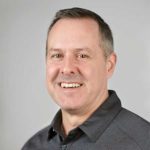Recorded: January 27, 2022
Most of us spend 90% of our time indoors. Our brains are naturally stimulated by and highly sensitive to the daylight signals; sitting indoors, we are not getting enough. Traditional lighting — even typical LED lighting — does not provide the proper light signals our bodies need to optimize our biological clocks and maintain healthy circadian rhythms.
For Patients, this manifests as interrupted sleep patterns, higher depression, lower tolerance to pain, and potential reduction in medicine efficacy.
For Students, insufficient daytime light can make students more sluggish during class time, impact academic performance, weight.
For Employees, insufficient lighting at work impacts mood, productivity, and overall health; This not only contributes to higher error/accident rates, but can also leave people feeling unfocused, lethargic, and unmotivated.
Objectives:
- Discuss the current state of research and new work in light and circadian rhythms.
- Understand the basic science of circadian rhythms and its interaction with light.
- Gain clear understanding of paradigm shift in thinking related to how we calculate circadian light levels.
- Outline health outcomes correlated to various parts of the visible light spectrum.
- Demonstrate methods for performing circadian lighting calculations, specifically using equivalent melanopic lux.
- Why 90CRI doesn’t do enough in the Healthcare/Senior space.
Speaker: Ken Esterly, WELL Faculty Member, ALA, IES, Educator IALD
 Ken Esterly is Vice President of Sales at BIOS Lighting, a NASA spin-off company. With almost two decades of expertise in the LED Interior lighting market, Ken has championed Quality vs Quantity of light for the last 9 years and presented on the differences between Psychological and Biological lighting for the last 5 years. His extensive knowledge of lighting technology and application provide a unique perspective on the development and integration of quality lighting technology for today’s rapidly advancing design environment, including WELL™. An IES Member and part of the WELL Faculty™, Ken has given AIA CEU presentations for the last 9 years that help educate lighting professionals on the latest developments in light and wellness. These sessions are not only educational, but are a great way to meet incredible people within the lighting industry and build long term relationships.
Ken Esterly is Vice President of Sales at BIOS Lighting, a NASA spin-off company. With almost two decades of expertise in the LED Interior lighting market, Ken has championed Quality vs Quantity of light for the last 9 years and presented on the differences between Psychological and Biological lighting for the last 5 years. His extensive knowledge of lighting technology and application provide a unique perspective on the development and integration of quality lighting technology for today’s rapidly advancing design environment, including WELL™. An IES Member and part of the WELL Faculty™, Ken has given AIA CEU presentations for the last 9 years that help educate lighting professionals on the latest developments in light and wellness. These sessions are not only educational, but are a great way to meet incredible people within the lighting industry and build long term relationships.
